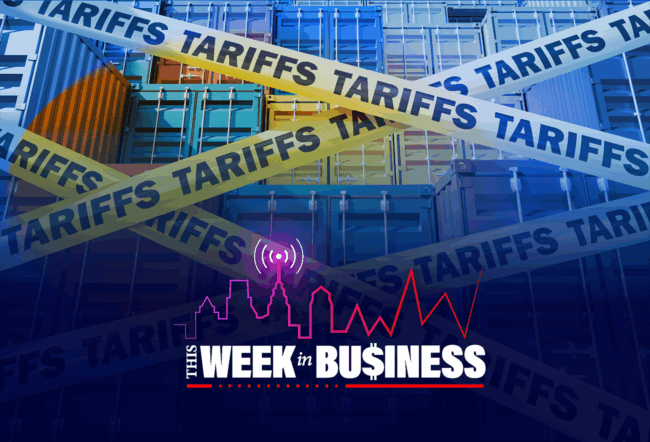A high-profile and successful stock offering may well be the ignition the U.S. IPO market needs to rebound from its recent lackluster showing, according to Wharton management professor David Hsu. The drop in IPO activity has been steep: The first quarter of 2022 saw 77 IPOs that raised $12.2 billion, compared to last year’s first-quarter tally of 395 offerings that raised $140 billion, according to a Barron’s report which cited data from Dealogic.
In 2021, the IPO market in the U.S. hit an all-time high with more than 1,000 IPOs raising about $316 billion. Electric vehicle maker Rivian was the star performer, raising $12 billion. Global IPO markets also boomed last year, raising $594 billion, but they have also slowed down significantly in the latest quarter.
“Oftentimes what activates these markets is a very visible IPO — one that really gets the attention of people,” Hsu said on the Wharton Business Daily radio show that airs on SiriusXM. High on his list of much-anticipated IPOs is Mobileye, the self-driving car unit that Intel bought in 2017 for $15 billion and plans to spin off; latest market estimates value the business at more than $50 billion.
Other IPO aspirants that Hsu listed as “household names” that could perk up sentiment include grocery delivery firm Instacart, online payments firm Stripe, social communications platform Discord, creator and artist platform Patreon, and plant-based meat producer Impossible Foods.
“Oftentimes what activates these markets is a very visible IPO — one that really gets the attention of people.” –David Hsu
“If you have a very well-known company that makes a strong move and does well in the public markets, it becomes a litmus test in some sense for the other companies that are a little bit on the fence,” said Hsu. They would help allay concerns among IPO aspirants over whether they could “get pummeled in the markets with all the choppy waters there,” he added.
Hsu said one segment of the IPO market that has “some momentum” are SPACs, or special purpose acquisition companies. SPACs are publicly listed shell companies that raise capital to buy private firms and take them public through IPOs within 18 or 24 months. He noted that about 575 SPACs are in the pipeline with their IPO windows expiring in late 2022 or early 2023. Those SPACs are “currently sitting on roughly $155 billion raised for private companies eager to list on a U.S. exchange,” Forbes reported, adding that last year, a record 606 SPACs took their companies public.
Unhelpful Forces
As IPO aspirants wait for those jump starters, the recent volatility in the stock markets is unhelpful. Over the past year, many IPOs have fallen dramatically below their offer prices since going public. “It’s quite choppy in the public markets. That equates to fear,” Hsu said. “Companies don’t want to take a gamble in terms of how their float is going to go.”
Uncertainty over rising inflation, rising interest rates, the geopolitical situation (Russia’s invasion of Ukraine), and the threat of new COVID variants are some of the other dampeners Hsu listed. Already, many companies have either shelved or put off their IPO plans after the Ukraine invasion.
Recent moves by the Securities and Exchange Commission to tighten rules for SPACs and the prospect of it bringing other restraints on the capital markets are also spooking the IPO market sentiment. SPACs have less onerous compliance requirements than traditional IPOs, but the SEC last month proposed a set of rules to “level the playing field” between the two. The proposal is now in a 60-day public comment period.
“It’s quite choppy in the public markets. That equates to fear.” –David Hsu
IPOs are only one among several options companies have to raise capital, and private equity is one of those. “There’s plenty of dry powder out there,” Hsu said of private equity money looking for investment opportunities, adding that market reports have put that at between $700 billion and $1.7 trillion.
Companies looking to raise capital could also agree to be acquired, Hsu said. “Some of the large established companies, like the Facebooks, the Amazons, and the Googles of the world are sitting on a lot of cash and they want to get into some areas in ways that are not necessarily organic.”
Testing Times
“All of that will combine and test the patience of management teams and shareholders in thinking about the range of options that are available to these companies and how anxious they are to raise money or to achieve liquidity,” Hsu said. Of those, regulation of SPACs will be crucial because “they have been such an important force, especially over the last couple of years, in dictating the number of companies that go public,” he added. The recent performance of many SPACs after listing is also underwhelming: The CNBC SPAC Post Deal Index, which comprises SPACs that have completed their mergers and taken their target companies public, tumbled 23% in January.
With that “complicating factor of what the financial regulatory landscape is actually going to look like, [IPO aspirants] may not want to test the waters too soon,” said Hsu. “[They would] rather be somewhat conservative in the face of that ambiguity.”
All considered, Hsu suggested that it is unrealistic to expect the IPO markets to repeat their 2021 performance. “Just to put this all into context, [last year’s IPO boom] is a very high watermark,” he said. “There are only so many companies out there that are looking to raise capital. There’s going to be a natural ebb and flow.”



